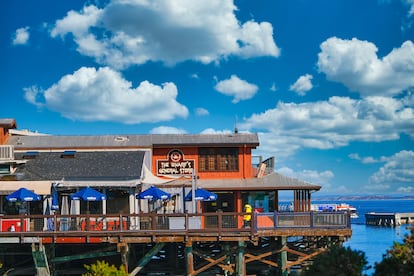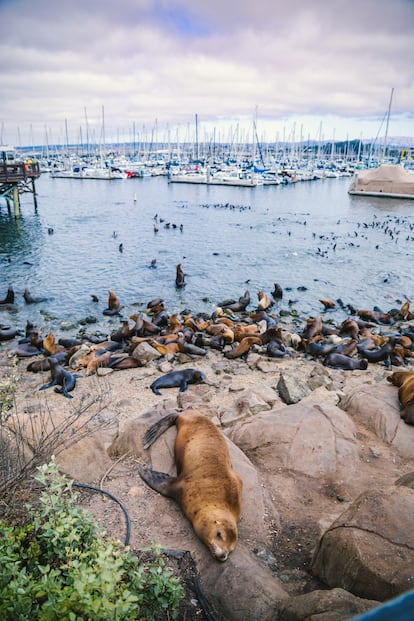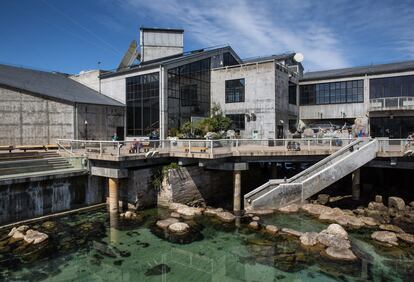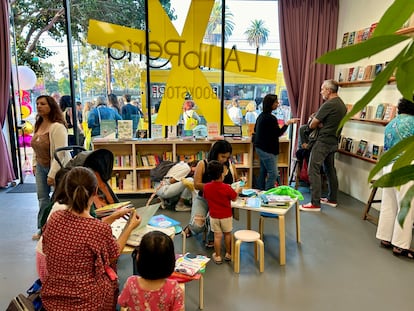A route through Monterey, by Robert Louis Stevenson
In this California town, as well as in the town of St. Helena and other enclaves in Napa County, the Scottish author found inspiration for two of his immortal works. Today, you can follow his footprints through museums, his house, and the landscapes that he captured in his books

Treasure Island is, without a doubt, one of the most famous “places” in history, created and immortalized by Robert Louis Stevenson. The Scottish writer found traveling to be a perfect form of stimulus and consolation, until he ended his days in the paradisiacal Polynesia. But before that, there were visits to Europe and America during his journeys, where his time in the Californian city of Monterey stood out. The seaside spot fascinated him perhaps like no other: “When once I was in these woods I found it difficult to turn homeward… go where you will, you have but to pause and listen to hear the voice of the Pacific,” he wrote.
In fact, his imprint on California would be so intense that he’s remembered in buildings across the state, with plaques dedicated to his work and life. On these lands, you’ll find the Robert Louis Stevenson State Park, in Napa County, where he ascended Mount Saint Helena. From the peak, on clear days, you can see San Francisco, the coast and the Sierra Nevada… glimpses that were essential for many of the descriptions in Treasure Island (1883). Meanwhile, in the city — specifically in the Chinatown neighborhood of San Francisco — tribute is paid to Stevenson, with a statue of a ship on a pedestal.

It is said that Stevenson — who was very ill at the time — was waiting for his romantic partner to get a divorce from her husband, so that he could finally meet her in Sacramento. This was in 1880: the writer spent two nights and a day under a tree, in total feeling of weakness and stupor, until two ranchers found him and took him to safety. During his convalescence, he would spend three months in Monterey, enjoying the care of the owner of a French restaurant, the Père Simoneau. The restaurateur grew fond of the Scotsman and became his friend, after discovering that they shared the same ideas about life. From that moment on, Stevenson would always send him every new book he published.
Stevenson House in Monterey is well-preserved: it’s where the author stayed from September to December of 1879. Legend has it that, during his time in California — in exchange for food that he couldn’t afford — Stevenson told stories of his travels through France or the Atlantic.
In a Monterey that Stevenson predicted would end up succumbing to the charms of mass commerce and tourism, the house has become a museum, taking care of the author’s manuscripts and personal objects. Many items come from the South Sea Islands. The city also offers visitors a large marine nature reserve, several automobile events, cycling festivals and other outdoor sports.
Without a doubt, Stevenson would admire Monterey Bay today, with attractions such as Fisherman’s Monterey Wharf, which preserves the old fishermen’s houses and offers a good assortment of seafood restaurants, and the Monterey Bay Aquarium, with exhibits featuring animals such as sea otters, seals, and humpback whales. What’s more, in this area, which has nearby sandy beaches and rocky promontories, where hundreds of sea lions gather, you can take boat trips to see whales and dolphins up close.

The white sandy beaches of the area, which make for a spectacular landscape, were walked on by Spanish explorers in the 16th century. Three centuries later, a fishing industry was consolidated in the town. In the 1950s, Monterey became the so-called “sardine capital of the world” — something that the most famous Californian writer, John Steinbeck, brought to literature.
To learn more about this other author, a native of nearby Salinas, you can visit the National Steinbeck Center. There are also attractions of a historical nature, such as the two-mile stretch called “The Path of History” in the old town of Monterey, which doesn’t require a guide thanks to the various yellow signs. The Monterey Museum of Art includes works by local artists from the last two centuries, contemporary photography, and paintings by Picasso and Matisse.

In the city of St. Helena
Just as Monterey hasn’t forgotten Stevenson, neither has St. Helena. The novelist went to this city in Napa County to spend his honeymoon… but ended up staying for a year. This was another excellent spot where all of his belongings accompanied him. At the Robert Louis Stevenson Museum, you can see 8,000 objects, in what is the world’s most important collection of the Scottish author’s possessions. From there, you can do a route that lasts many miles, passing by where he walked or wrote: the Calistoga hotels, the abandoned Silverado mines, or the Schramsberg Vineyards. The entire area belongs to the Napa Valley, a region almost as touristy in terms of visitor numbers per year as Disneyland.

Another wing of the museum houses the Napa Valley Wine Library. This is because Stevenson made another friend in the area: the man who founded the aforementioned vineyards, Jacob Schram. He’s portrayed in the travel memoir The Silverado Squatters (1883), where Stevenson details the 18 kinds of wine he drank on one of his visits.
Not in vain, in his class on Stevenson — within his literature courses at Wellesley and Cornell — Vladimir Nabokov said: “There’s a delicious flavor of wine in this book. In fact, throughout the story, a large amount of old wine was drunk.” He’s referring to Strange Case of Dr. Jekyll and Mr. Hyde (1886), which was somehow born in the American West… very far from the writer’s native Edinburgh, just a few years before meeting his premature death in beautiful Samoa.
Sign up for our weekly newsletter to get more English-language news coverage from EL PAÍS USA Edition
Tu suscripción se está usando en otro dispositivo
¿Quieres añadir otro usuario a tu suscripción?
Si continúas leyendo en este dispositivo, no se podrá leer en el otro.
FlechaTu suscripción se está usando en otro dispositivo y solo puedes acceder a EL PAÍS desde un dispositivo a la vez.
Si quieres compartir tu cuenta, cambia tu suscripción a la modalidad Premium, así podrás añadir otro usuario. Cada uno accederá con su propia cuenta de email, lo que os permitirá personalizar vuestra experiencia en EL PAÍS.
¿Tienes una suscripción de empresa? Accede aquí para contratar más cuentas.
En el caso de no saber quién está usando tu cuenta, te recomendamos cambiar tu contraseña aquí.
Si decides continuar compartiendo tu cuenta, este mensaje se mostrará en tu dispositivo y en el de la otra persona que está usando tu cuenta de forma indefinida, afectando a tu experiencia de lectura. Puedes consultar aquí los términos y condiciones de la suscripción digital.
More information
Archived In
Últimas noticias
The complicated life of Francesca Albanese: A rising figure in Italy but barred from every bank by Trump’s sanctions
Reinhard Genzel, Nobel laureate in physics: ‘One-minute videos will never give you the truth’
Pinochet’s victims grapple with José Antonio Kast’s rise in Chile
Half of Scotland is in the hands of 420 property owners
Most viewed
- Pablo Escobar’s hippos: A serious environmental problem, 40 years on
- Why we lost the habit of sleeping in two segments and how that changed our sense of time
- Trump’s obsession with putting his name on everything is unprecedented in the United States
- Charles Dubouloz, mountaineering star, retires at 36 with a farewell tour inspired by Walter Bonatti
- The Florida Keys tourist paradise is besieged by immigration agents: ‘We’ve never seen anything like this’










































